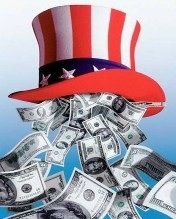
By Kevin G. Hall
RISMEDIA, January 29, 2009-(MCT)-Economists think the stimulus plan at hand, while far from perfect, will help stimulate the moribund U.S. economy.
There’s no panacea for what ails the economy. A stimulus plan will work only in combination with other actions, such as more aid to the banking system to spark lending and boost consumer confidence, and the implementation of any plan will be as important as what’s in it.
However, most leading economists who are experienced in public policy generally favor the stimulus plan that the House is considering because through it the government will step up spending at a time when private-sector spending has fallen off sharply.
Some economists are ideologically opposed to any such massive government plan. The Cato Institute, a libertarian research center, has organized a list of dozens of academic economists who oppose the plan, urging instead tax cuts and smaller government, in favor of free markets and lower taxes over big government activities. Cato will advertise its list in coming days. However, that isn’t where the balance of expert opinion comes down today.
The House legislation would erect four pillars of economic stimulus. It would provide income support to the poor and recently unemployed, distribute aid to state governments, seek relatively quick employment gains through public works spending and aim to spark consumer and business spending through targeted tax cuts.
“I think it’s a reasonably well-designed package,” said Mark Zandi, the chief economist for forecaster Moody’s Economy.com and a former adviser to the presidential campaign of Republican Arizona Sen. John McCain.
The key to the plan’s success won’t be its design, but its implementation, he cautioned, particularly the public works spending on roads, schools, ports and military bases.
“It runs the risk of turning into pork projects that are done more for political than economic reasons, but if it is well managed and run, it could” do much good, said Zandi, who’s been a frequent expert witness before Congress as lawmakers drafted competing plans.
House Republicans have lampooned some modest spending provisions in the package that have little to do with stimulating the economy, but those measures account for only a small portion of the money.
Some critics warn that “Buy America” provisions directing road projects to use U.S.-made steel and concrete may raise costs to taxpayers. Jim Owens, the chief executive officer of Caterpillar Inc., whose company is the world’s largest maker of bulldozers, told CNBC television on Monday that Buy America provisions would force him to fire workers because of increased project costs.
A related danger is that such nationalistic policies could encourage foreign governments to imitate them. That would hurt U.S. exporters such as Caterpillar and could further shrink global trade, one of the mistakes that nations made during the Great Depression of the 1930s.
The nonpartisan Congressional Budget Office, in an analysis released Monday and in congressional testimony Tuesday, said that the Democratic stimulus plan generally would get government money into the economy quickly, with 65% of it spent by October 2010.
The CBO, however, offered a frank warning that the deluge of money being made available for public works programs could overwhelm federal, state and local agencies. It said history suggested that there was a lag between when funding was authorized and when it was spent.
“Based on such experiences, CBO expects that federal agencies, along with states and other recipients of that funding, would find it difficult to properly manage and oversee a rapid expansion of existing programs so as to expend the added funds as quickly as they expend the resources provided for their ongoing programs,” the agency said.
Testifying before the Senate Budget Committee on Monday, a former vice chairman of the Federal Reserve said that the provisions to aid state governments would help prevent a bad situation from turning worse.
“Aiding states will prevent them from taking actions to balance their budget-cutting spending and raising taxes-that will make the recession worse,” said Alice Rivlin, a former Fed governor and a prominent economist with the center-left research center The Brookings Institution. Most state constitutions require budgets to be balanced.
Private-sector economists who support the stimulus plan say that it could be made better, and, yes, bigger.
“I would make the package bigger . . . increase the package to over $1 trillion,” Zandi said.
One change, he said, could be to take the $7,500 tax credit being proposed for home purchases by first-time buyers and apply it to all home purchases, payable at closing. This would help reverse the deep slide in the national housing market.
Zandi also proposes a bigger payroll-tax holiday, which would provide temporary relief for workers and their employers, getting more cash into the economy.
© 2009, McClatchy-Tribune Information Services.










